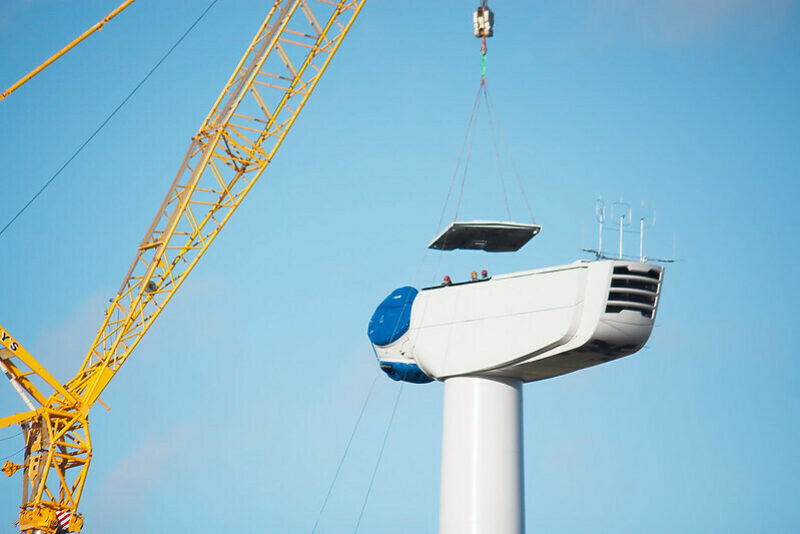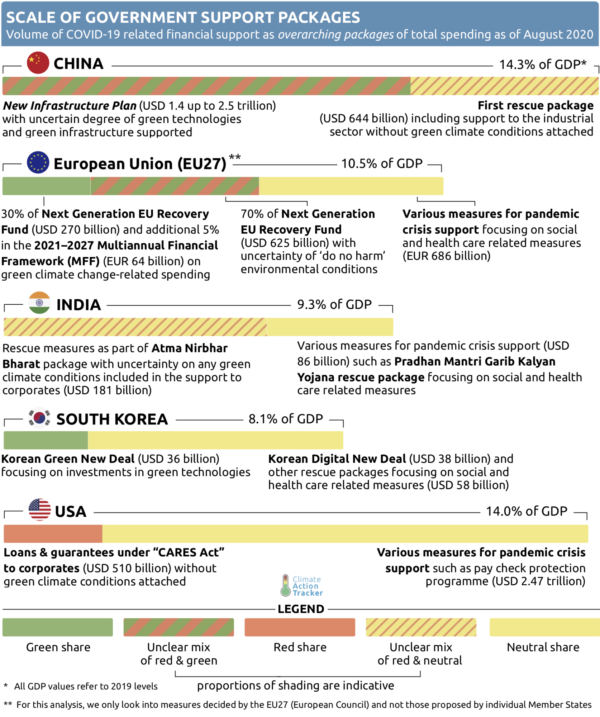Global update: Pandemic recovery with just a hint of green
Authors
Climate Analytics

In this briefing, we examine the COVID-19 recovery packages of five major emitters – China, EU27, India, South Korea and the USA; we present the global temperature update, taking into account the economic impact of COVID-19; and we share key insights from the updated assessments for 13 of the 36 countries assessed by the Climate Action Tracker, including projections of the effect of the COVID-19 pandemic on 2020 emissions.
This briefing provides a directional analysis as to what we could expect in terms of emissions developments in the future, considering that COVID-19 adds another layer of uncertainty to the forecasting exercise, given the lack of information and how long this will last.
COVID-19 recovery analysis: still waiting for green plans
For the analysis on recovery packages, we looked into 106 domestic measures across the five countries, grouped into overarching packages (aggregated rescue and recovery announcements) and individual interventions (relevant and quantifiable measures of rescue, recovery, and regulatory rollbacks).
At the overarching packages level, we found the investments being made represent more than 8% of GDP for the EU27, India and South Korea, and even up to 14% of GDP in the case of the USA and China.
There is even less information available at the individual interventions level. In fact, the interventions for which we were able to find detailed information account for only between 0.5% to 2.5% of GDP (compared to the 8% to 14% of GDP that the entire overarching packages represent).
Through this country-level analysis we find that key emitters are taking different approaches in their early economic recovery practices:

Current global warming is now at 1.1°C above pre-industrial levels, and global average temperature will rise by 2.9°C, based on current policies (or policies governments are currently implementing) (WMO, 2020). This shows that governments are far from meeting the Paris temperature limit of 1.5°C.
While emissions are likely to be lower in 2030 compared to a pre-COVID-19 scenario, due to the economic downturn, this reduction in emissions is not the result of any structural change in the economy or decarbonisation efforts and therefore will not be sustained in the long run.
The effect of a lower current policies scenario in 2030 on our estimate of temperature increase by 2100 is minimal, because we assume that the dip in emissions will not continue post-2030. This temperature estimate is slightly lower compared to last year’s estimate for this reason and is more due to CAT methodological improvements rather than actual government action on climate (see technical annex for details).
The post-COVID-19 current policy scenario only considers the economic impact of the pandemic and does not yet consider the impact of any recovery or stimulus measures. To be compatible with the Paris Agreement’s temperature goal, governments must ensure that the recovery supports the transition to a zero emissions society.











